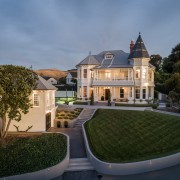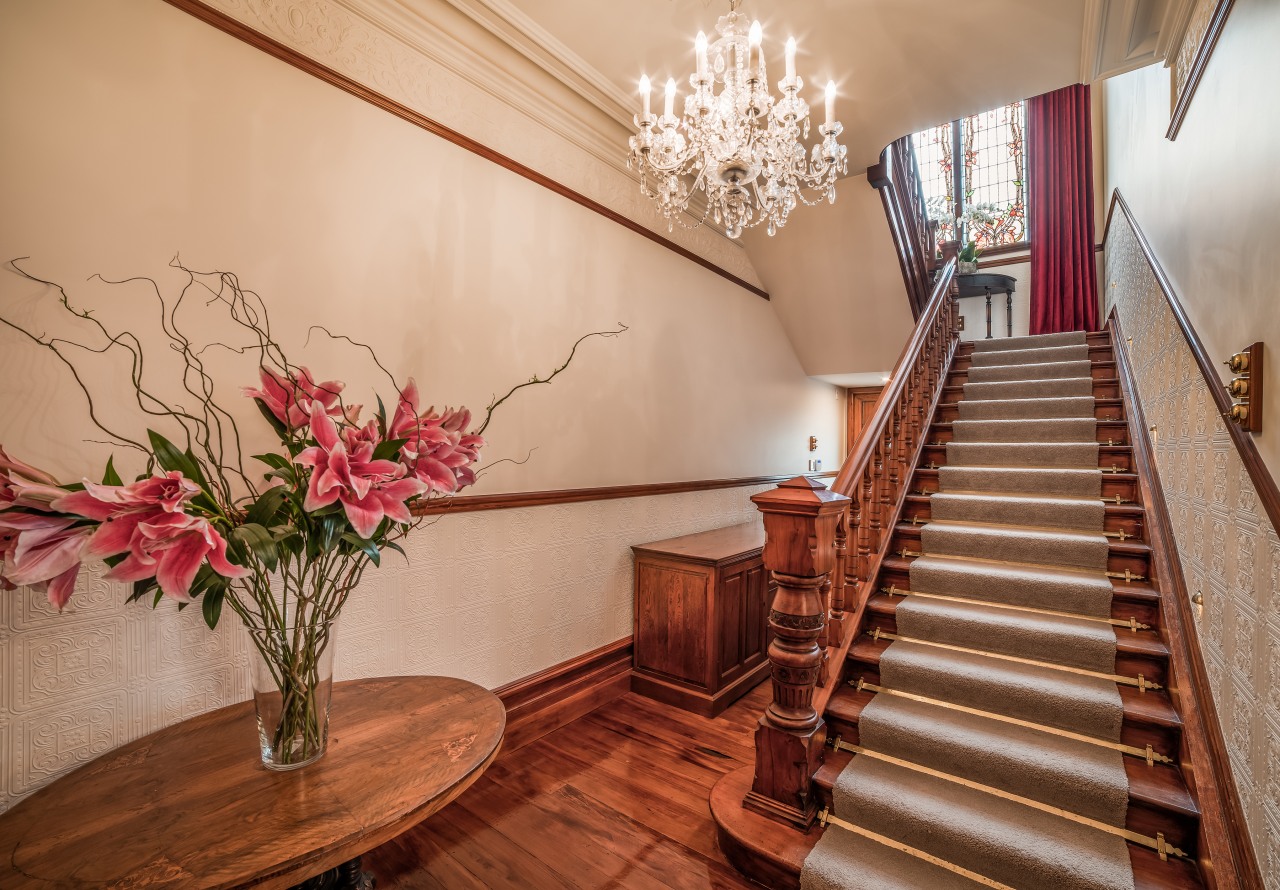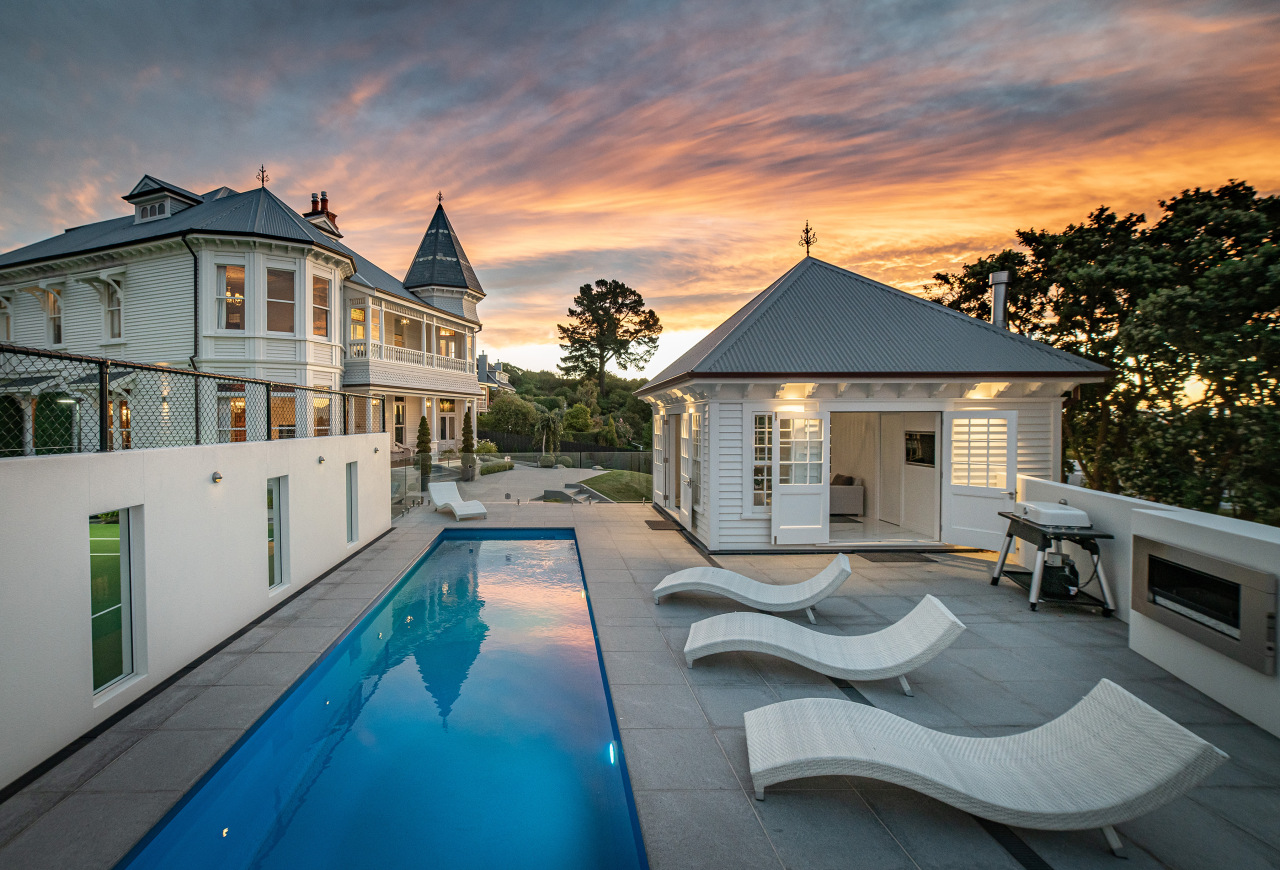To the manor reborn
Not-so-little moves like appropriating and demolishing the next door house along with tucking another floor in under the existing roofline, were just two aspects of this makeover which has brought a grand-looking manor house back into its rightful glory. Another design move has future-proofed the house well into the future
Renovation by Michael John, AO Architecture
From the designer:
Thornton Earl Manor was constructed at the turn of the century by the England Brothers, they were a renowned architect and builder of early Christchurch.
The manor was commissioned by a South Canterbury farming family as their Christchurch townhouse.
Sited on the Port Hills of Christchurch, the home was originally on a large parcel of land which included an orchard, glass houses, gardener's cottage, servants' quarters, tennis court and substantial gardens.
However, the land around the manor had been slowly reducing in size as the Cashmere area developed.
The owners have been the custodians of the manor for over 30 years and before the Canterbury earthquakes, the pair had just completed renovating the house.
Luckily, they had recently moved bedrooms before the night of the September 2011 earthquake, as the masonry chimney collapsed, falling onto their bed. Damage was extensive to the manor – masonry chimneys collapsed, the Marseilles roof tiles dislodged and there was extreme damage both structurally and cosmetically to all the interiors.
After all the couple’s hard work renovating, it was undone in minutes.
Having narrowly avoided injury, the owners then embarked on an extremely ambitious project – to restore and renovate the manor on a large scale.
The neighbouring house to the east which was originally part of the property was reincorporated with the manor. This was then utilised for the tennis court and pool. Utilising the basement of the demolished 1960s house, this was converted into a wine cellar with a new pool house introduced sympathetically above.
Due to the vast scale of the manor and being designed in a bygone era, it was decided that having the ability to lock a couple of doors to separate it into four apartments would be advantageous.
It is increasingly unlikely that homes of this scale will be used as originally intended and to have this flexibility gives future certainty to the manor, something that was paramount for the owners.
Thornton Earl Manor was stripped back to the studs and most floors removed. It was then structurally strengthened to 100% of the Building Code including underpinning, re-levelling, new shear walls and extensive bracing.
The second-floor billiard room was added to utilise the massive roof space which required the roof structure to be mostly rebuilt. An elevator was added for accessibility to all three floors and this was disguised as an old cast iron water tank from the exterior.
Due to the ability to utilise the manor as four separate apartments, extensive fire rating was required. This came in the form of fire-rated linings to almost all walls and ceilings, which was a tremendously complicated task.
Special attention was paid to insulating and heating considering the large volume of the manor. Due to being well built with 5" and 6" framing this afforded the opportunity to extensively insulate.
Heating utilised underfloor ducted heat pumps to the ground floor and ducted ceiling heat pumps to the other floors. These were all disguised with period-correct grills.
Losing the existing interior due to damage was heartbreaking but it did enable the interior to be sensibly altered. In terms of dimensions, the ground floor entertainment spaces were largely left intact. The first floor was altered to provide a dressing room, bathroom with new balcony, and allowing for the new staircase up to the second level billiards room.
An external spiral staircase was sourced from the UK to access the first floor apartment which had been the old servants’ quarters.
The interior was recreated with authentic attention to period detail to the great rooms with a more modern aesthetic to kitchens, bathrooms and informal areas.
The period detailing was an arduous task and took many great tradespeople and their skills to recreate.
Credit list
Renovating designer
Kitchen designer
Interior design and landscaping
Cladding
Wallcoverings/wallpaper
Heating HVAC / Mitsubishi / AMT Mechanical Services Ltd.
Control systems
Builder
Kitchen manufacturer
Pool
Roofing
Flooring
Paint
Fireplace
Awards
Story by: Trendsideas
Photography by: Simon Larkin
Home kitchen bathroom commercial design
Trends 19-11
In this edition, along with exploring some truly sculptural new homes, we also focus on beautiful kitchen design – but t...
Read More


















